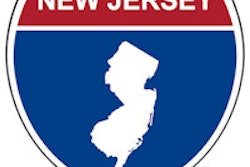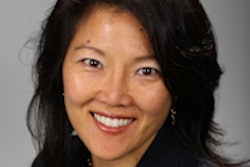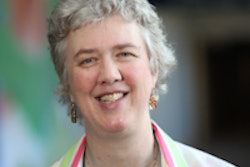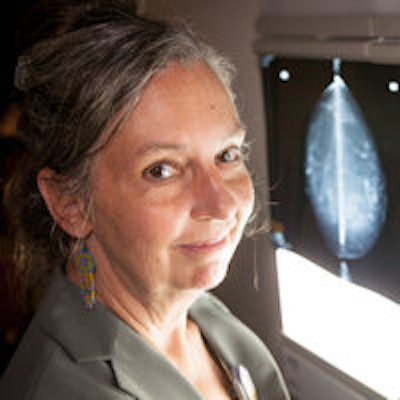
In January of 2014, my home state of Oregon became the 11th state in the U.S. to pass a law requiring mammography providers to inform female patients with extreme breast density about their status and how this may impact the radiologist's ability to detect cancer on a mammogram.
In our breast imaging center, we have long made it a practice to have onsite reads of mammograms followed by in-person consultations with our patients. For women with dense breast tissue, we have performed same-day ultrasound scans for the past 20 years. Therefore, the new law didn't change anything in our practice other than a small edit in the official written notification to include the state-mandated density-inform language.
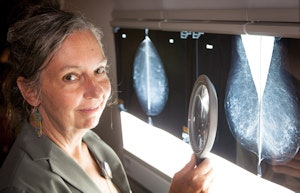 Dr. Amy Thurmond, director of Women's Imaging & Intervention in Lake Oswego, OR.
Dr. Amy Thurmond, director of Women's Imaging & Intervention in Lake Oswego, OR.However, what did change with the passage of the law was broader community awareness of density, and not always in a positive way. From a patient perspective, the long-standing recommendation of having an annual two-view low-radiation-dose mammogram starting at age 40 no longer seemed so clear. Marketing of breast tomosynthesis -- with more images and more radiation -- was causing some patients to request the test when it was not appropriate for them.
There is a common misperception that more testing and newer options must mean more accurate results, even though, for the great majority of women who do not have dense breast tissue, and even for some who do, the additional testing has no added benefit.
We decided we had to step up and help our ordering physicians to educate our patients and the broader community about breast density, cancer risk assessment, and responsible use of screening modalities.
Why radiology should lead density education
In Oregon, as in nearly all of the 18 other states that mandate informing patients with dense breast tissue about their status, the language the laws say to use when notifying a patient includes a sentence or two encouraging the patient to discuss cancer risk and the possible need for additional screening with her healthcare provider. A one-on-one discussion between the doctor and the patient is truly the best way to make important medical decisions that are both patient-centered and evidence-based.
However, it is asking a lot of our ordering physicians, mostly in primary care, to amass the same level of knowledge of the various imaging modalities for breast cancer screening that we as radiologists have.
Complicating the situation further is that mammography is a service line that has always had a certain degree of what I call "drama" associated with it, because research studies on mammography make for reliable high-interest news stories in the media.
Our own local paper has run articles questioning whether specialists adequately inform younger women about mammography's risks1 and have written follow-up stories such as the 2014 article in BMJ that questioned mammography's value.2 It even carried a syndicated Dr. Oz column that advised all patients to ask about tomosynthesis, based predominantly on marketing.3
As a result of news stories such as these and marketing efforts by device developers, we have seen women in the Portland area pay out of pocket to get the option with higher radiation dose, tomosynthesis, when their insurance would cover a radiation-free breast ultrasound exam. Bilateral breast ultrasound, when combined with a traditional low-dose mammogram, is just as good as tomosynthesis in detecting breast cancer -- and, unlike tomosynthesis, the radiologist can give the woman her results immediately.
Our approach to density education
Breast cancer is a highly emotional issue. Nearly every woman has at least one friend or family member who has been touched by breast cancer. The anxiety can be intense.
In our practice, Womens Imaging & Intervention, my partner, Dr. Robert Seapy and I provide immediate mammogram reads. Making patients wait to learn their results by mail or phone call when an immediate read is possible is just not acceptable.
Unlike our ordering physicians, we are positioned to constantly evaluate new imaging technologies and make evidence-based recommendations about breast cancer screening options. For the majority of patients, dense breast tissue that may obscure cancer is not an issue, and a traditional 2D mammogram is the only test they need. When the mammogram does show dense tissue, we explain this to the patient at the same appointment as the mammogram and discuss additional screening options right then.
We find that when patients fully understand all of their screening options, nearly all prefer a breast ultrasound for secondary screening because the exam is comfortable, they do not receive unnecessary additional radiation, and the exam is accurate. In addition, because our workflow is to perform any needed follow-up ultrasound imaging and needle biopsies at the same appointment as the mammogram to reduce the anxiety of waiting for results, our patients can have the test done before they go home.
I want to make clear that although we do a lot of breast ultrasound scans and do not provide tomosynthesis at our location, we don't steer patients into just one modality. For every patient, along with the written breast density notification required by law, we provide a table that shows the six breast cancer screening modalities -- digital mammography, tomosynthesis, ultrasound, breast-specific gamma imaging (BSGI), MRI, and thermography -- side-by-side. The table compares the modalities by energy source, radiation, whether an injection is needed, and approximate cost for cash pay. We find a simple table helps us during the patient discussion of modalities and risks compared with benefits for each option. The choice of follow-up test is truly a collaborative one between the patients and us.
An investment that pays off
Since Oregon's breast density law went into effect, our ordering physicians say they appreciate our approach. Patients they send to us have less anxiety and fewer questions for them after their appointment.
For questions before an appointment, we have developed our own simple patient and physician education materials. Provided to our ordering physicians and posted on our website for anyone to access is a patient flyer describing our findings about tomosynthesis and our approach to the screening of women with dense breast tissue for cancer.
Additionally, the website of the American College of Radiology and its companion patient site mammographysaveslives.org are excellent resources for ordering physicians to help them respond to common patient questions.
Finally, we've used our local paper's editorial section to increase awareness about the importance of annual mammograms and discussing additional screening with a doctor instead of relying on news stories or marketing materials.
Radiologist-led communication supports imaging technology developers
Leaders in the development of advanced imaging development generally do not shy away from competing on the quality of their technology. Their long-term future is just as dependent on doing what is in the best interest of patients as ours is.
While our jobs are different -- theirs is to advance a particular device's usefulness and ours is to compare the usefulness of different devices -- our ultimate goal of the highest-quality patient care is the same. By both having a strong voice, we have the best chance of reaching that goal and maintaining the highly respected position of imaging in healthcare.
For further information, please see the educational website just launched for patients and healthcare providers to answer questions about breast density, screening technologies, and risk assessment: www.DenseBreast-info.org.
Dr. Amy Thurmond is the director of Women's Imaging & Intervention and has more than 25 years of experience in women's imaging.
The comments and observations expressed herein do not necessarily reflect the opinions of AuntMinnie.com, nor should they be construed as an endorsement or admonishment of any particular vendor, analyst, industry consultant, or consulting group.
References
- Burke JR. Specialists may downplay the harms of mammography in younger women. Oregonian. April 30, 2012.
- Miller AB, Wall C, Baines CJ, Sun P, To T, Narod SA. Twenty five year follow-up for breast cancer incidence and mortality of the Canadian National Breast Screening Study: Randomised screening trial. BMJ 2014;348:g366.
- Oz M, Roizen M. Drs. Oz and Roizen: A smarter breast cancer screening approach. Oregonian. May 2, 2013.





